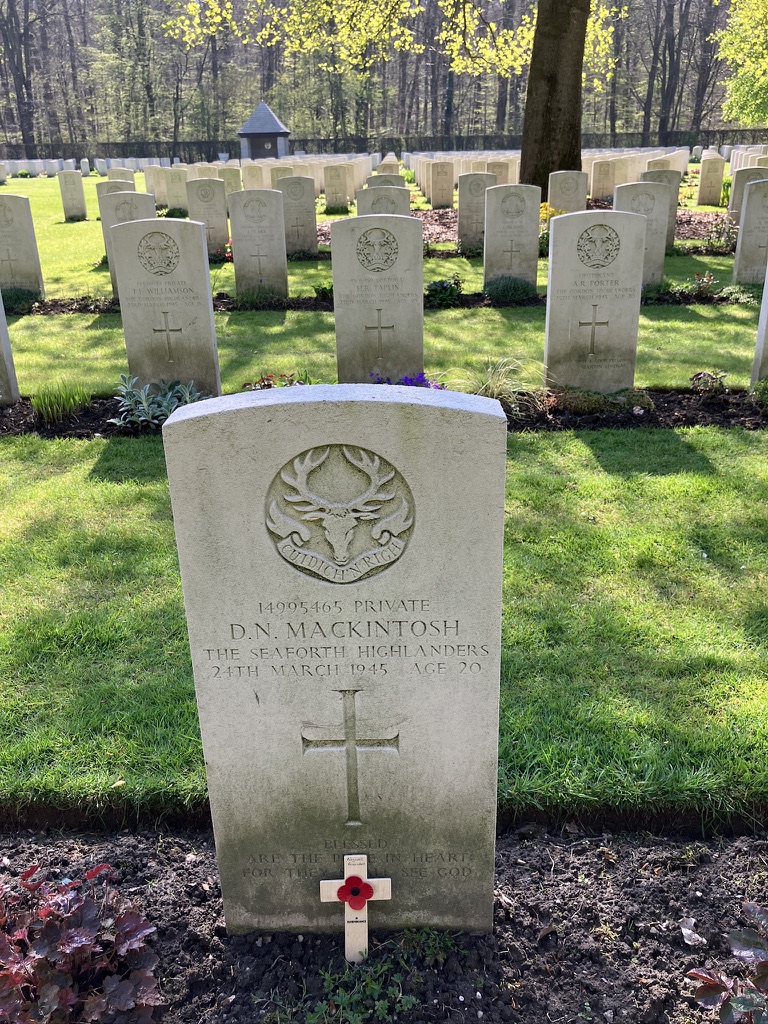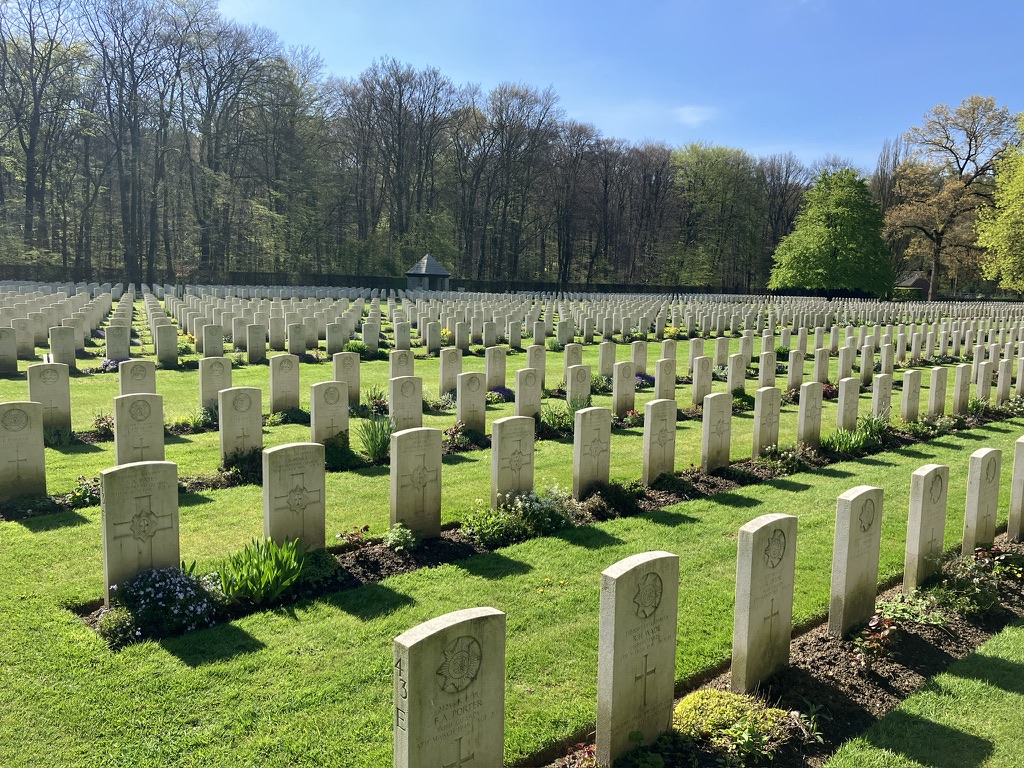| Surname: | MacKintosh |
| Forename(s): | Donald Ninian |
| Rank: | Private |
| Service number: | 14995465 |
| Regiment: | Seaforth Highlanders |
| Date of death: | 24 March 1945 Aged 20 |
| Place of death: | Groin, Germany |
| Buried
Commemorated |
Reichswald Forest War Cemetery 52. C.-4.
Kingussie War Memorial |
Background
Donald’s birth was registered in Kingussie in 1924. His parents were Finlay MacKintosh (born 1887) and Bella m.s. McKenzie. They were married in Leith on 24 October 1913. In the 1911 Census his parents are living at Campbell’s Buildings, Kingussie.
In 1916 at the time of his brother Finlay’s birth Donald’s father is described as an assistant grocer and presently a gunner in the Royal Garrison Artillery.
In the 1921 Census the family are living in the High Street, Kingussie where his father is described as a grocer working for J.C.Dallas, Miller and also present is Donald’s paternal grandfather James who is described as a sawmiller.
Before his enlistlement Donald was employed by Balfour Beatty and Company and for a time with Messrs Heron, contractors, Fort William. He was a member of the Kingussie Home Guard Platoon and reported as “popular with all ranks.”
His eldest brother Finlay, who was born in 1917, was married by Warrant of the Sheriff at the Castle, Inverness to Williamina MacPherson 15 June 1940. Finlay’s occupation was given as Tunnel Miner.
He had an older sister Jean. His brothers Duncan and Angus had previously died in World War Two. His brother Finlay John MacKintosh survived.
War Record
It was a small village of no peacetime importance set in a flat, featureless country; but it covered a main exit from Rees, and it was essential that no enemy reinforcements should reach Rees. Also, our bridgehead had to be expanded. We had to have it. ……………………….The Battalion moved from its cramped position in the ditches at 0015 hours on March 25 after seventeen hours on the east bank of the Rhine. A Burning building in the factory which the 2nd Seaforth had captured acted as a beacon, and Groin too was on ‘fire; but, even so, the route was difficult to follow, so tortuous was it and in places so blocked with rubble and trees. The main road was being heavily shelled by long-range guns, and we had casualties. The noise was so deafening that we could hardly hear the mattresses destined for Groin passing overhead. All round the horizon houses burned, and everywhere shells were bursting. We passed through the Camerons at 0100 hours, and advanced on the village. Extract from “Battalion” by Alastair Borthwick. Alastair Borthwick first published in 1946 under the title, Sans Peur (the Battalion’s motto), and re-published by Bâton Wicks – London.
His grave has the inscription chosen by the family
Blessed
are the pure in heart
for they shall see God


